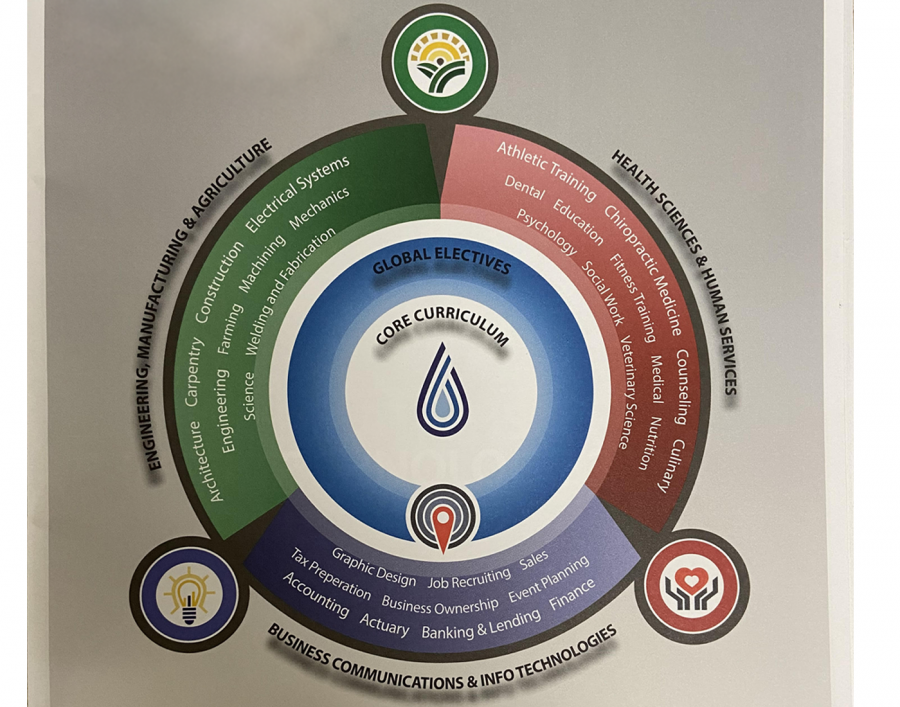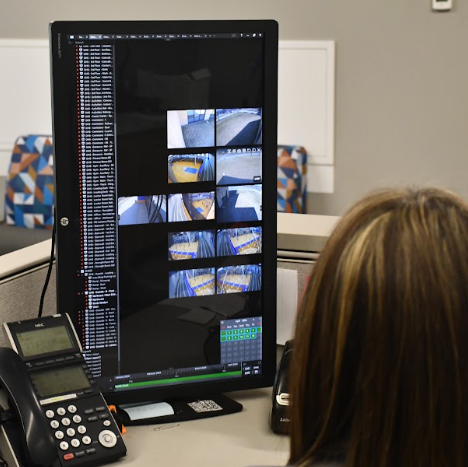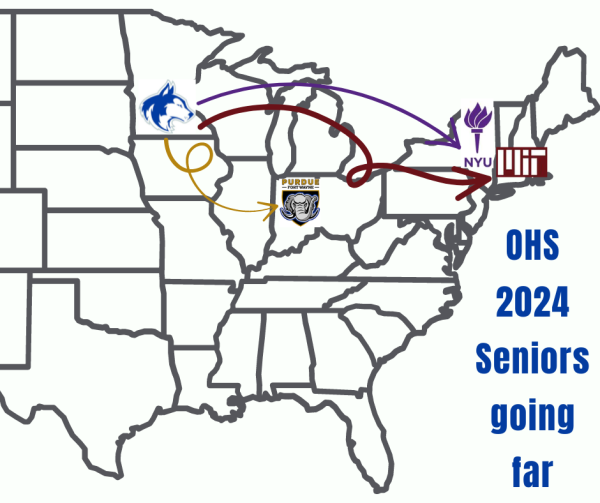Registration
Owatonna College and Career Pathways Course Layout
March 11, 2020
Registration night took place on March 5. Approximately 87 percent of the student body has registered for next year, but counselors are still working with students on their registration details.
PSEO applicants have until May 30 to finalize their details. OHS requires students that plan to attend PSEO to register for eight credits and six alternates just like the rest of the student body. Vicki Berdan said, “It’s easier for a student to drop OHS classes in the Fall once they come in with their PSEO schedule than to try to pick up classes if they should change their mind, not be able to get the PSEO classes they want, or have other circumstances that prevent them from going PSEO.”
Registration has been revamped and the registration guide has a new look because of the advancements in moving forward with Career Pathways. Pathways has made it easier to place elective classes into specific groups. When it comes to adding and removing classes, teachers and departments decide and look at how they fit best into select pathways.
Looking at the guide itself, there are the three pathways laid out. The business, communications and intro to technology pathway set students up for future jobs such as graphic design, accounting and business ownership. The engineering, manufacturing and agriculture pathway sets students up for future careers in architecture, farming and construction. Finally, the health and human services pathway prepares students for a life in chiropractic medicine, veterinary science and culinary. The goal is to try and identify courses within each pathway that lead to specific kinds of careers. Mr. Wiken said, “Ideally, what we want to do is help students figure out what their aptitudes are. What are they good at, what are their interests, and where do they align.” He explains how things are a little softer right now as students can take classes in multiple pathways. Students can then determine which way they are going to focus their path by looking at where the majority of their classes have been taken.
A goal with the new registration system is to help students decide what their future goals are once they leave high school by giving students the idea to look at STEM careers. Mr. Wiken said, “One of the things that people often don’t think about is that college, the four-year route, is not for everybody.” There are a lot of careers out there that you can get into with an internship or working at a business. Some places send their employees back to school and pay for their tuition, or they will specifically train their employees so no college is necessary at all for them to succeed in the workforce. Career Pathways is helping to show students what they might want to do in the future, and potentially start teaching so that students can get a head start when it comes to their future after high school. One of the things that people often don’t think about is that college, the four-year route, is not for everybody. — Assistant Principal Philip Wiken
Registering for PSEO allows students to take their classes they are required to take at the high school, but also gain college credit that they don’t have to pay for. In order to be a part of PSEO there are guidelines for students to help them succeed. Mrs. Berdan said, “There are a lot of students who want to just go part-time (PSEO) because they want to be with their friends, have lunch, maybe take a few classes, so they still get to be a part of the high school experience.”
The path is completely separate from the high school, and it is treated exactly as a college course. If students are falling behind in classes, or they drop out of classes, it is completely up to the student to figure out how to get back on track. This separation can be beneficial for students but has its fair share of downfalls. Parents and administration at the high school do not know that a student may have problems until graduation comes along and they do not have enough credits to graduate. Parents do not have access to grade reports or other things in the same way that colleges do not release this information.
Registering for classes is looking for new directions with the advancements of both completely online course work, as well as a new layout to help students decide what is going to be a good fit for them, not only now, but possibly in the future after high school.









